#ww1 centenary
Video
youtube
“We’re here because we’re here, because we’re here. We’re here...”
In 2016, to mark the centenary for the beginning of the Battle of the Somme, across the UK, 1500 voluntary participants dressed in WW1 uniforms and appeared across the numerous towns and cities of the UK where, a century before, men and boys as old as them, left on trains before leaving to fight in the fields of France. Many of whom would not return.
The title comes from the satirical song sung by British soldiers in the trenches, “We’re here because we’re here”, to the tune of Auld Lang Syne.
59 notes
·
View notes
Text

The tiny roll of honour in Aswarby church, Lincolnshire…
#ww1#great war#cwgc#war#graves#history#ww1 history#remembrance#world war 1#world war one#ww1 centenary#lestweforget
0 notes
Text
"you're a huge in memoriam fan? you must have so much merch!"

this is all i got... this is all i got
#my peace poppy and my ww1 centenary badge from a school trip to france in 2017😔#this is all i got#in memoriam#alice winn#in memoriam alice winn#gauntwood#sidney ellwood#henry gaunt#photo
8 notes
·
View notes
Text


CATHERINE'S STYLE FILES - 2012
26 APRIL 2012 || The Duchess of Cambridge attended a reception launching the Imperial War Museum Foundation's First World War Galleries: Centenary Campaign along with the Duke of Cambridge in London.
#duchess of cambridge#catherine cambridge#mine.#26.04.2012#iwm ww1 galleries centenary campaign launch#imperial war museum#amanda wakeley.#alex mcqueen.#alex mcqueen b.#cassandra goad.#temple of heaven pendant earings#jimmy choo.#cosmic heels#anya hindmarch.#british royal family#british royals#kate middleton#catherine middleton#brf#royalty#royals#royal#british royalty#royal fashion#fashion#style#lookbook#catherines style files#style files 2012
46 notes
·
View notes
Text
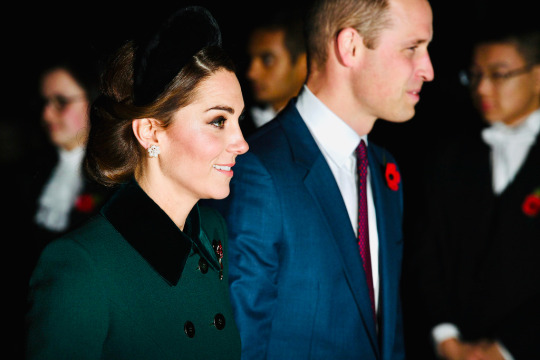
11 November 2018 | Prince William, Duke of Cambridge and Catherine, Duchess of Cambridge attend a service marking the centenary of WW1 armistice at Westminster Abbey on November 11, 2018 in London, England. The armistice ending the First World War between the Allies and Germany was signed at Compiègne, France on eleventh hour of the eleventh day of the eleventh month - 11am on the 11th November 1918. This day is commemorated as Remembrance Day with special attention being paid for this year's centenary. (c) Leon Neal/Getty Images
#Catherine#Duchess of Cambridge#Princess of Wales#Prince William#Duke of Cambridge#Prince of Wales#Britain#2018#Leon Neal#Getty Images
4 notes
·
View notes
Text
Field Music on Their First World War Centenary Shows at Britain’s Imperial War Museums
Field Music collaborated with the Britain’s Imperial War Museums to explore the end of WW1 and the events that followed. Under The Radar Magazine's Max Pilley goes deeper into the band's creative process – and uncovers why "the echoes...are still really present."
0 notes
Text
Windlesora No. 34
Contents
The Totem Pole
Sir Dhunjibhoy Bomanji
Princess Christian Nursing Home
Centenary of the End of WW1
Horse Chestnuts and the War Effort
Windsor and the End of the Great War
Ghosts of Businesses Past
Award for WLHG Chairperson
Windsor: Contagious Diseases Act
Frederic Rainer
Princess Charlotte
Vera Lynn in Windsor
Thomas HArdy
Lord Roberts and the Veterans series
Private John…
View On WordPress
0 notes
Text
19 teenage girls died in Tipton in 1922, from WW1!
John Knowles of the Phosphor Bronze Company in Dudley Port purchased 160 tons of surplus cartridges, intending to recover the lead bullets from their copper jackets. The majority of his employees were teenage girls. #OTD in 1922, a spark from an open fire in the factory ignited some gunpowder that had been left on the floor. The subsequent explosion destroyed the factory’s roof, shattered many windows, and rocked Dudley Port. A total of nineteen girls died

https://www.expressandstar.com/news/local-hubs/sandwell/tipton/2022/03/06/ceremony-marks-centenary-of-tipton-factory-explosion-which-killed-19-young-girls/
Relatives of the bereaved at the memorial ceremony in 2022, photo Express and Star
0 notes
Text
A general refresher on the habit of collecting wartime memorabilia
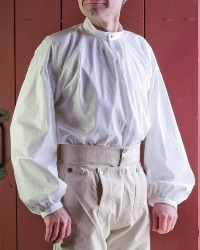
It is not uncommon to find a box full of disorganized pages of military documents, a stack of photographs of men in uniform, a scrapbook of military service mementos, or even replications of the US revolutionary war uniforms at the house of a person interested in collecting wartime memorabilia.
The habit of collecting wartime memorabilia
Human beings have been collecting diverse types of things, depending on their preferences, for as long as anyone can remember. Some like to collect items because of certain monetary or sentimental value, others may simply find the activity fun or want to preserve the past. There are a few people who collect items that are a bit unusual, like outfits worn by celebrities or even swizzle sticks. The trend of collecting old coins or wartime memorabilia has been actually pretty popular, especially among history enthusiasts.
The last decade has particularly witnessed a substantial increase in the number of people collecting military and war relics. There are several reasons for it, including the passing of the seventy-fifth anniversary of World War II and the First World War centenary. Other reasons include the growing presence of the internet in the lives of people which provides them with a wealth of information about the major wars in history. The popularity of newer and more realistic movies about the Great Wars has also led to a renewed interest among people in wartime memorabilia. A lot of people have added ww1 Australian uniforms and similar items to their collection in recent times.
What to collect
Usually, the people interested in wartime memorabilia collect a bit of everything, starting from medals and helmets to flags and uniforms. These collectors may end up with full sized mannequins on which they display their collections, including US Civil war uniforms. On the other hand, many others might just focus on a certain type of item and collect a wide variety of it from diverse nations.
Collectors who collect items by nationality are quite common. They usually collect American, German, and Japanese wartime items, followed closely by Russian, French, and British. Then there are ultimate specialist collectors who only collect particular items from selected nations, at times even specific vital pieces of an item. For instance, you can find specialists who are mostly focused on collecting and studying only the United States silver and bronze star awards and their World War II recipients.
0 notes
Text
Unknown Soldier Interred in Arlington
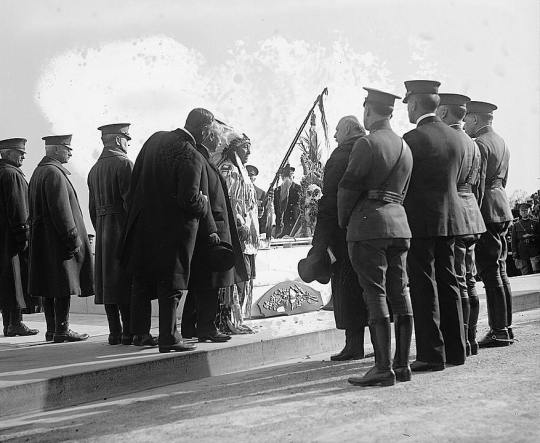
Chief Plenty Coups of the Crow Nation, pictured at the burial of the Unknown Soldier. The sarcophagus familiar to modern visitors was not completed until 1931.
November 11 1921, Arlington--On Armistice Day 1920, the United Kingdom and France had both buried unknown soldiers in places of honor--the former in Westminster Abbey, the latter under the Arc de Triomphe. In 1921, the United States followed suit. An unknown soldier was transported back across the Atlantic from France, where he laid in state in the Capitol rotunda for two days. On Armistice Day, the same day that the peace treaty with Germany would finally enter into effect, the casket was at the front of a procession down Pennsylvania Avenue as far as the White House, followed on foot by President Harding and General Pershing.
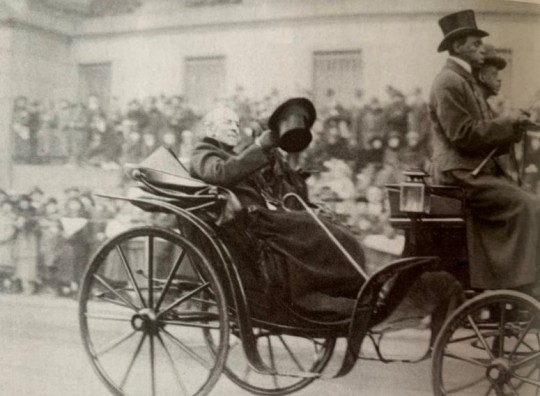
Wilson in a carriage at the end of the procession down Pennsylvania Avenue.
At the end of the procession were Woodrow and Edith Wilson in a rented carriage. The New York World wrote that the “pale face of the man who gave his health and strength to uphold the same ideals for which the Unknown Soldier died seemingly unleashed the pent-up emotions of the watchers.” Wilson did not continue on to Arlington, due to a combination of his health concerns preventing him from climbing the stairs at the amphitheater there, and Harding’s desire not to be upstaged by his predecessor.
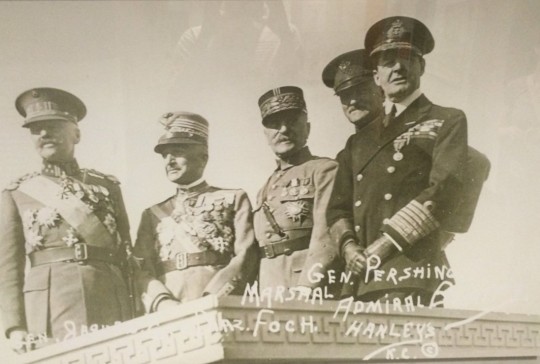
General Jacques of Belgium, General Diaz of Italy, Marshal Foch of France, General Pershing of the United States, and Admiral Beatty of the United Kingdom, pictures at the dedication of the Liberty Memorial in Kansas City on November 1.
At the service in Arlington, President Harding gave a brief speech. He was followed by General Jacques of Belgium, Admiral Beatty (who presented the Unknown Soldier with the Victoria Cross), Marshal Foch, and General Diaz. The four military men were at the end of a tour of the United States, along with General Pershing, which also included the groundbreaking of the Liberty Memorial (now the National World War I Memorial) in Kansas City on November 1. Also in attendance were a large number of foreign civilian notables, among them Arthur Balfour and French PM Briand, who were in Washington for the start of the Washington Naval Conference on arms limitation the next day.
The burial service ended with a brief statement by Chief Plenty Coups of the Crow Nation, the sounding of “Taps” on a bugle, and a twenty-one gun salute.
Sources include: Patricia O’Toole, The Moralist (includes image credit for the picture of Wilson).
#wwi#ww1#ww1 centenary#world war 1#The First World War#The Great War#woodrow wilson#wilson#Edith Wilson#pershing#diaz#Beatty#unknown soldier#washington dc#harding#warren g harding#Balfour#briand#peace#Armistice Day#armistice#november 1921
81 notes
·
View notes
Photo
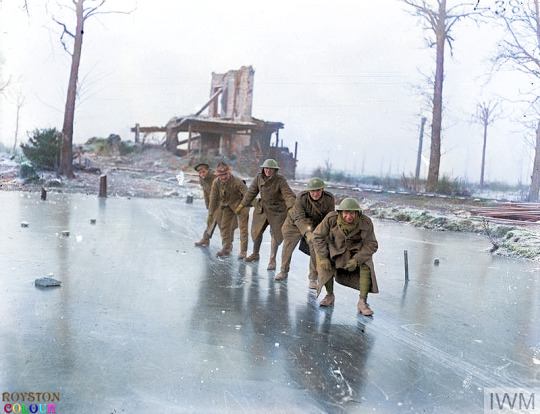

Dec 13 1917 War photographer #DavidMcLellan takes this photo, IWM Q 8369, of soldiers from multiple nations sliding on ice in Ypres.
Colourized by Royston Leonard
58 notes
·
View notes
Text
They Shall Not Grow Old Review
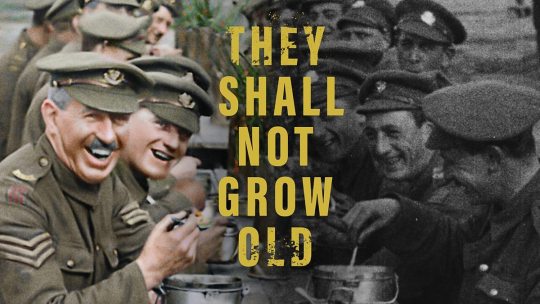
I should not need to explain to anyone how important and significant this film is. I just love Peter Jackson with all my heart cause the guy just gives a shit about everything, he's so respectful with absolutely any material he has to work with and has such a love for the craft of filmmaking it could make me cry on cue.
The sheer astonishment of technical achievement on display here was breathtaking in the most extraordinary way possible. The singular moment of watching the WWI archive footage stretch in aspect ratio and be blown up with colour will go down in cinematic history as one of the greatest moments of all time and is probably my absolute favourite cinematic moment of all time.
The stories, the insight, the feelings, the sorrow and the aftermath convey nothing but pride for one's country yet a level of disdain for what one's country and its people have done with the sacrifices of those during the war.
#they shall not grow old#ww1#ww1 centenary#wwi#peter jackson#the lord of the rings#the hobbit#king kong#film reviews#personal
11 notes
·
View notes
Photo
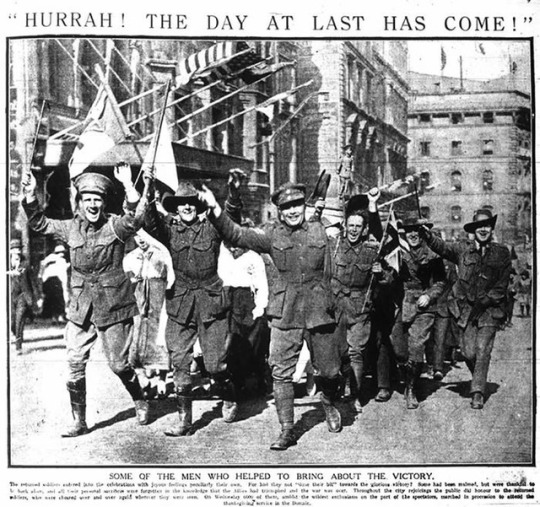
11 AM, 11 November, 1918 - The Great War Ends
Pictured - Eleventh month, eleventh day, eleventh hour.
German delegates signed the armistice at five in the morning, with fighting to cease at eleven. The war continued up til then. General Bernard Freyburg received orders to attack a bridge at 9:30. He reached it just before eleven and charged across on horseback, getting in return a bullet in his saddle, 100 prisoners, and a bar to his Distinguished Service Order. Nearby a Canadian named George Price was killed by a sniper at 10:58. Harry Truman’s artillerymen fired off their last round at 10:45. In many batteries, all the gunners pulled the lanyard, so that everyone could say they had fired the last shot of the war.
Across from a South African brigade, a German Maxim-gunner rattled off his last belt of ammunition. When he finished, he was “seen to stand up beside his weapon, take off his helmet, bow, and then walk slowly to to the rear.”
Then, at 11 A.M., the guns stopped firing.
“There came a second of expectant silence,” wrote Scottish soldier John Buchan, “and then a curious rippling sound, which observers far behind the front likened to the noise of a light wind. It was the sound of men cheering from the Vosges to the sea.”
A wave of emotion descended on the Western Front, even if not everyone felt the same. In Eddie Rickenbacker’s aerodrome, fighter pilots partied. “I’ve lived through the war!” shouted one. “We won’t be shot at any more!” In the trenches a British sergeant was heard to tell his company that “It’s all over, an armistice has been signed.” “What’s an armistice mate?” asked one man. “Time to bury the dead,” replied another. Leading a column of soldiers into the town of Mons, Lieutenant J.W. Muirhead saw three dead British soldiers who had been killed that morning, “each wearing the medal ribbon of the 1914 Mons Star.” In town they found many more dead Germans, “also killed that day... Boys were kicking them in the gutter.”

Americans celebrate the armistice.
News spread rapidly throughout the world. Londoners filled Trafalgar Square, Parisians the Champs-Élysées. Factories let out their workers and the pubs stayed open all night, usually with the entire crowd singing “God Save the King,” “La Marseillaise,” and “The Star-Spangled Banner,” no matter what country they were in. Yet even victory day had sombre touch to it. “These hours were brief,” recollected Winston Churchill, “their memory fleeting; they passed as suddenly as they had began. Too much blood had been split.” Robert Graves spent the day “walking alone along the dykes above the marshes of Rhuddlan... cursing and sobbing and thinking of the dead.” In Rochester, a mother named Lucy Storrs thanked God that each of her four sons had survived the war. Then the phone rang. It was a friend calling to say that her second son Francis had died the previous evening.
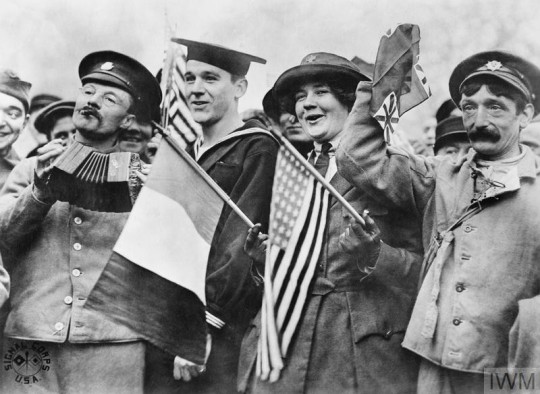
Allied soldiers, sailors, and civilians cheer the news in Paris.
Everyone who participated in the war hoped that, in some form, their sacrifices would lead to a better world. The final tragedy of the War to End All Wars was that it completely failed to do so. The cannons ceased on the Western Front on November 11, but they opened up elsewhere. In northern Russia, Allied troops were in action against the Red Army that day. Europe’s new states squabbled as soon as they were born; Romania declared war on Hungary on November 12. The Great War had unleashed hatreds onto the earth which could not be easily reburied. In human terms it had killed maybe as many as ten million people. It damaged millions more in body and soul.
Perhaps it is no surprise then that the Treaty of Versailles could not set the world aright. In May 1919, the Daily Herald published a cartoon by Australian illustrator Will Dyson, depicting the peacemakers leaving the palace of Versailles. France’s Prime Minister Georges Clemenceau, Le Tigre, is looking around and speaking to the others: “Curious! I seem to hear a child weeping!” Unseen by them is a child in tears. Above the sobbing boy’s head is a caption, identifying him as the Class of 1940.
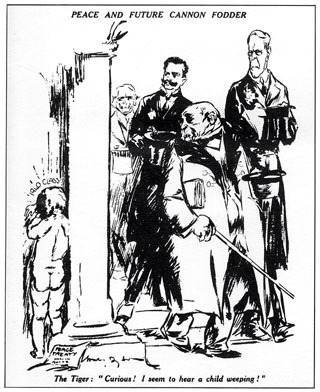
#ww1#ww1 history#ww1 centenary#1918#history#world war one#first world war#great war#armistice#treaty of versailles#end of the war#armistice day#thank you everyone#november 11 1918
2K notes
·
View notes
Photo

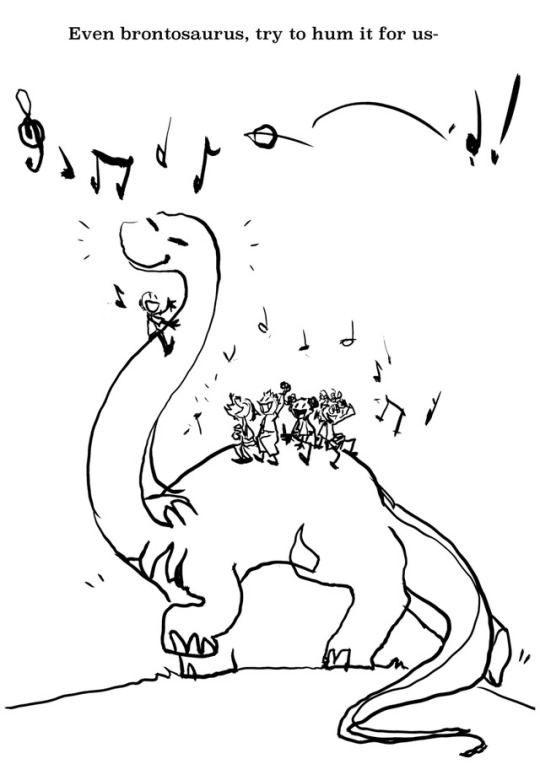

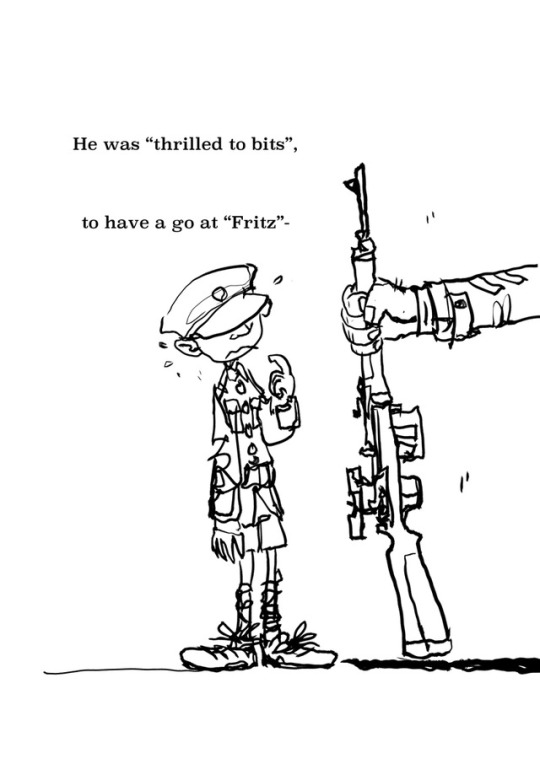
My old piano teacher, Roger Shelmerdine, is a great guy and writes songs! He often organises events with choirs, and he very kindly asked if I would illustrate some selected sections of lyrics for a concert (which was held yesterday evening and went very well) for this year’s Remembrance Day and the 100th anniversary of the end of WWI. Apparently the kids from the primary school choir, who did a fantastic job, really liked these, so hopefully you will too!
The last one with the boy and the gun is a song based off a real story about a boy called Sidney who lied about his age and entered the army at the age of 12. I wanted the size of the gun and the hugeness of the hand to sort of describe how obvious it must have been and how eager the adults involved were to overlook it all. Part of the song goes like this-
"An officer am I, and recruitment is my aim,
I'm paid the sum of 'two and six' for ev'ry single name.
The more that sign the dotted line, the more that I can earn-
and so I turn a blind eye to every 'age' concern."
#commission#illustration#ww1 centenary#ww1#rememberance day#mod art#really nice to go back to this inky style#I should use it more
1K notes
·
View notes
Text

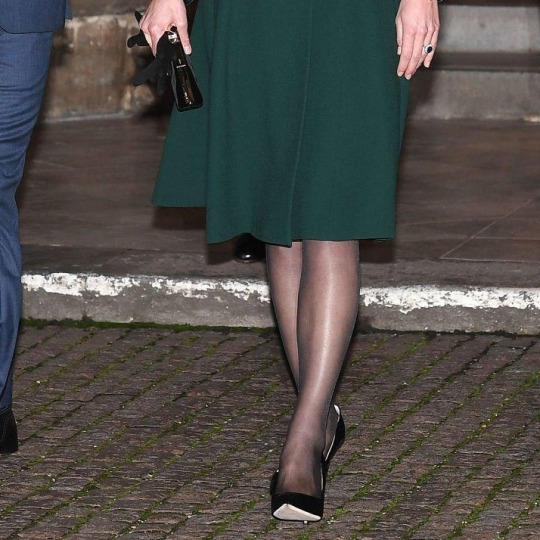
CATHERINE'S STYLE FILES - 2018
11 NOVEMBER 2018 || The Duchess of Cambridge, along with Prince William, attended a service marking The Centenary Of WW1 Armistice at Westminster Abbey in London.
#catherines style files#style files 2018#mine.#princess of wales#duchess of cambridge#11.11.2018#catherine walker.#jane taylor.#jimmy choo.#cassandra goad.#cavolfiore earrings.#cavolfiore earrings#cavolfiore pearl earrings.#cavolfiore pearl earrings#rbl : gold tone poppy brooch.#rbl : gold tone poppy brooch#royal british legion.#buckley london.#cartier.#ballon bleu watch.#british royal family#british royals#kate middleton#royalty#royals#royal#royal fashion#centenary of armistice service 18#remembrance 18#princess catherine
19 notes
·
View notes
Text
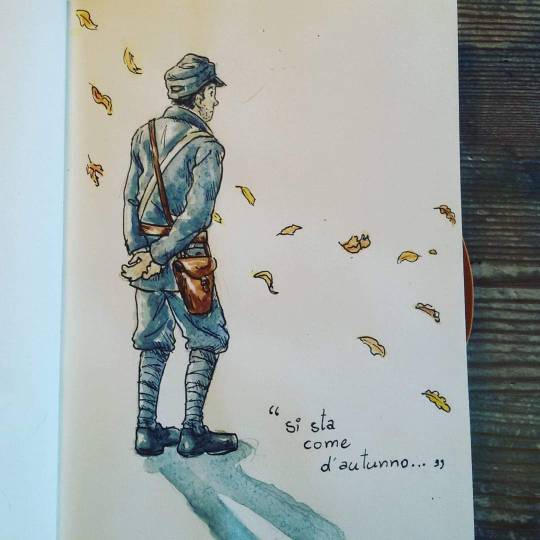
An old watercolor sketch, drawn during a reenactment event, remembering one hundred years from WW1.
And a quote from "Soldati" ("Soldiers"), a short poem written by the Italian poet Ungaretti, who describes his experience as a soldier saying he felt like a leaf on an autumn tree.
#Soldati#giuseppe ungaretti#Ungaretti#soldier#WW1#ww1 centenary#watercolour#watercolor#sketch#poetry#traditional art#traditional artist#traditional drawing#artist on tumblr#artists on tumblr#reenactment#italian
18 notes
·
View notes